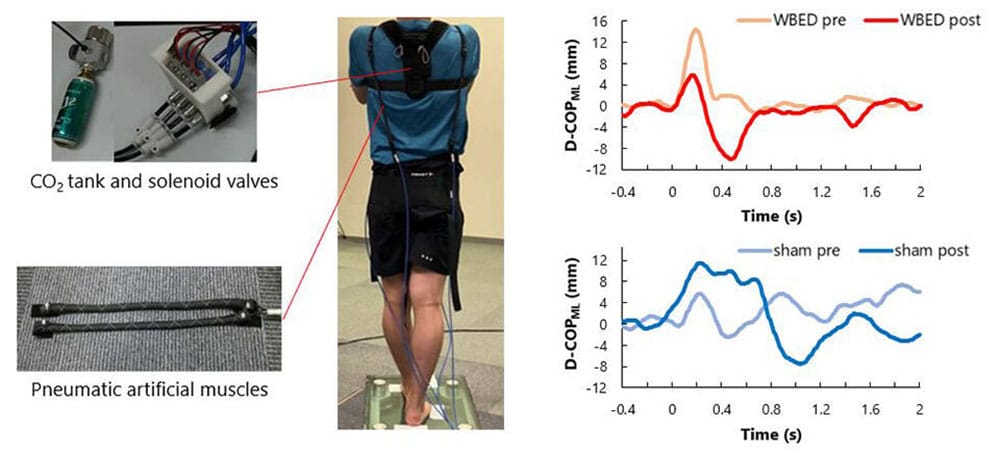Maintaining balance and posture is a skill that comes naturally to most people, but it is actually quite complex. As people age, postural control tends to worsen due to various reasons, such as muscle weakness, changes in vision, and sensory input. This is why older people are more prone to falling and suffering fall-related injuries than younger individuals. In fact, it has been reported that approximately 40% of older individuals fall at least once a year.
Fortunately, scientists have found that postural control can be improved through various exercises, which can help prevent falls. It is possible to train and cultivate the ability to perform compensatory postural adjustments (CPAs) to counteract the effects of unexpected external disturbances. However, the devices used for this exercise are generally bulky, expensive, and complex to use, making them suitable for clinical settings only.
Now, researchers from Tokyo University of Science (TUS), Japan, have developed an innovative wearable balance exercise device (WBED) and investigated its effects on CPAs and reactive postural control. This device is flexible lightweight, and allows users to perform balance exercises at home.
The device uses two pneumatic artificial muscles (PAMs) to generate unexpected perturbations. The PAMs, which look like a pair of hollow shoulder straps or suspenders, can be extended or contracted by adjusting the air pressure within them.
The WBED includes a set of electronically controlled valves linked to a compressed gas canister. This allows a computer program or smartphone app to regulate the valves and swiftly fill or empty either PAM with gas, creating a force that pulls the user sideways in a specific direction. The device weighs only 0.9 kg and takes less than three minutes to put on.
To investigate the effectiveness of WBED in improving reactive postural control, the researchers tested their device on 18 healthy adult males, who were randomly assigned to either the WBED or sham group. Initially, all participants underwent an evaluation of reactive balance by holding a tandem stance for one minute while air cylinders on both sides of the hips pushed them laterally at unpredictable moments.

The WBED group then performed balance training using the proposed device, while the sham group underwent the same exercises without any unexpected perturbation. Finally, a second evaluation was conducted to assess for any improvements in postural control.
During the evaluations, the researchers measured several variables as outcomes, including peak displacement, time at peak displacement, peak velocity, and root mean square of the soles’ center of pressure. The results showed that the WBED group had lower displacement and peak velocity after exercising with the device, indicating that WBED can be effective in improving reactive postural control.
“Our results prove that perturbation-based balance exercises using WBED immediately improve the subjects’ reactive postural control,” remarks Dr. Yamamoto, satisfied with their findings. “Wearable exercise devices, such as the proposed WBED, could contribute to the prevention of falls and fall-related injuries.”
The study aimed to explore how perturbation-based balance exercises using WBED can improve reactive postural control. It is believed that enhancing reactive postural control along with static balance function can prevent falls and related injuries. The findings of this research could potentially contribute towards developing effective home-based interventions for individuals to improve their postural control using WBED.
Journal reference:
- Masataka Yamamoto, Koji Shimatani, Daiki Yoshikawa, Taku Washida Hiroshi Takemura. Perturbation-Based Balance Exercise Using a Wearable Device to Improve Reactive Postural Control. IEEE Journal of Translational Engineering in Health and Medicine, 2023; DOI: 10.1109/JTEHM.2023.3310503
